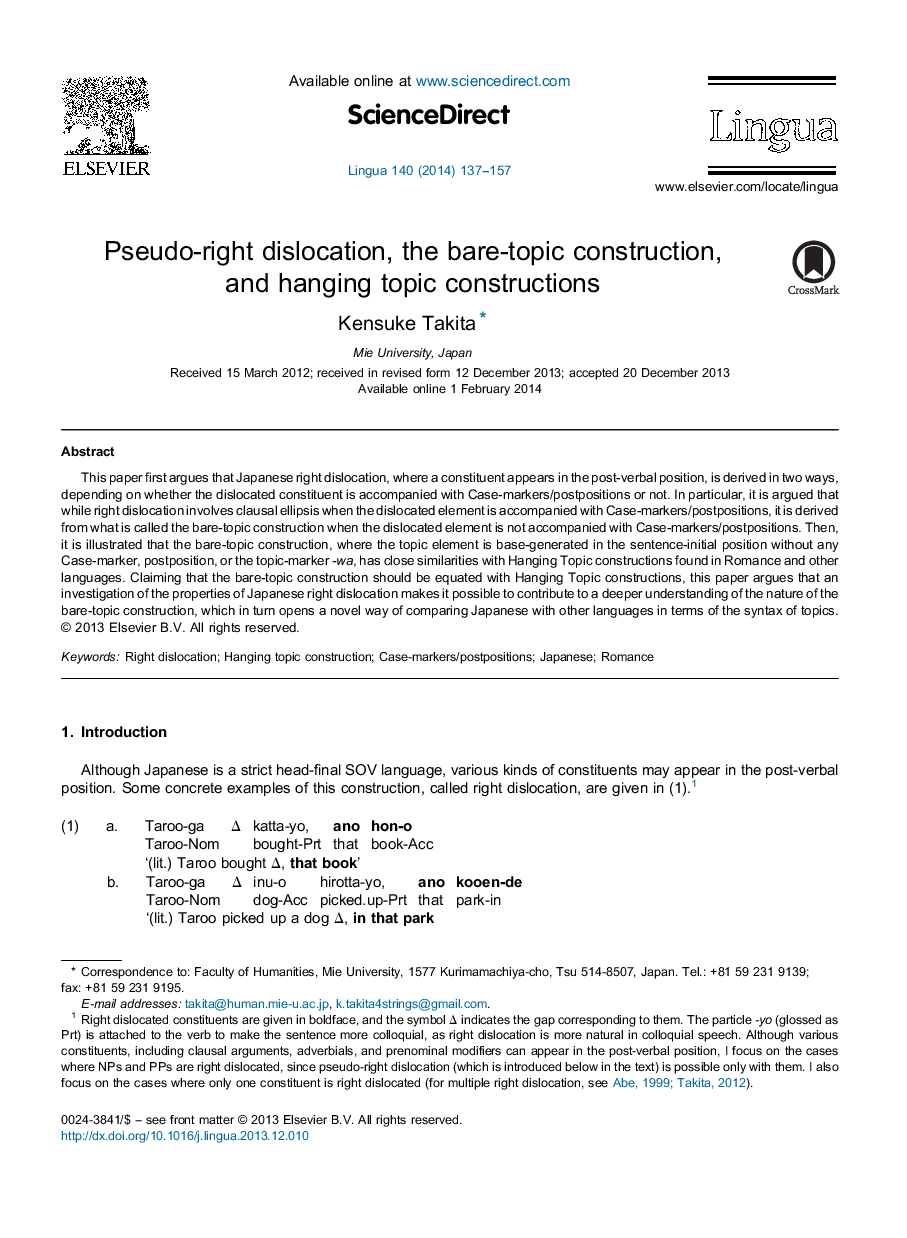| کد مقاله | کد نشریه | سال انتشار | مقاله انگلیسی | نسخه تمام متن |
|---|---|---|---|---|
| 935596 | 1475068 | 2014 | 21 صفحه PDF | دانلود رایگان |
• Offering new findings on Japanese right dislocation.
• Arguments for ellipsis approaches to right dislocation.
• Close similarities between bare-topic and hanging topic constructions.
• A new approach to comparative syntax of topics in Japanese and Romance.
This paper first argues that Japanese right dislocation, where a constituent appears in the post-verbal position, is derived in two ways, depending on whether the dislocated constituent is accompanied with Case-markers/postpositions or not. In particular, it is argued that while right dislocation involves clausal ellipsis when the dislocated element is accompanied with Case-markers/postpositions, it is derived from what is called the bare-topic construction when the dislocated element is not accompanied with Case-markers/postpositions. Then, it is illustrated that the bare-topic construction, where the topic element is base-generated in the sentence-initial position without any Case-marker, postposition, or the topic-marker -wa, has close similarities with Hanging Topic constructions found in Romance and other languages. Claiming that the bare-topic construction should be equated with Hanging Topic constructions, this paper argues that an investigation of the properties of Japanese right dislocation makes it possible to contribute to a deeper understanding of the nature of the bare-topic construction, which in turn opens a novel way of comparing Japanese with other languages in terms of the syntax of topics.
Journal: Lingua - Volume 140, February 2014, Pages 137–157
